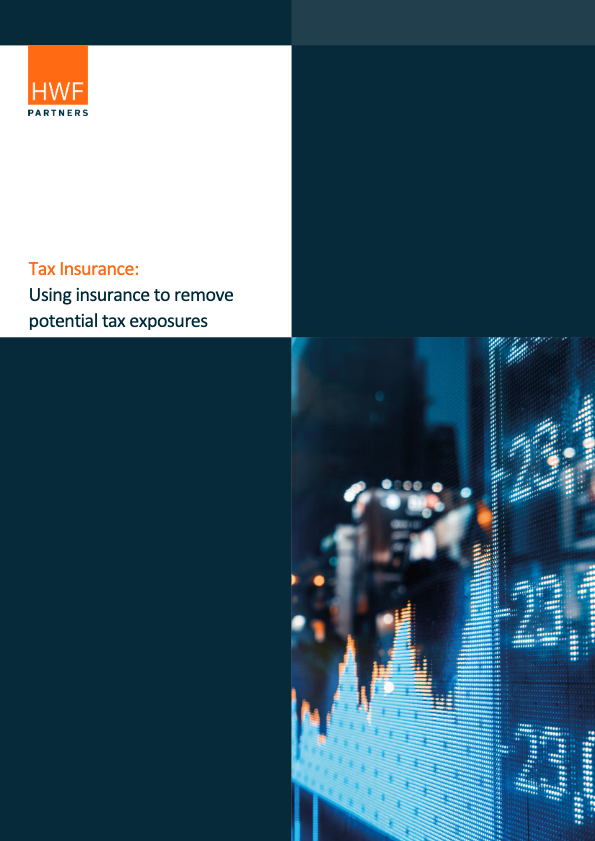Tax Insurance: Using insurance to remove potential tax exposures
Increased competition between insurers (four main tax markets in 2016, now 10+ credible markets) together with increased understanding of and demand for specific tax insurance products in both transactional and operational scenarios, has led to tax insurance becoming a commonly used tool for mitigating tax risks arising in a wide range of circumstances, most commonly those identified in M&A transactions.
HWF are able to structure insurance backed solutions to ring-fence potential tax issues providing certainty if that issues crystallises.
When can tax insurance be advantageous?
- Low risk & high quantum and certain medium/higher risk tax issues identified as part of the M&A due diligence process that are likely to be excluded from any W&I policy.
- Protection against operational tax risks (e.g. VAT, transfer pricing, tax residency etc).
- Insuring non M&A transactional tax risks (e.g. arising due to reorganisations, refinancings etc).
- In a pre-sale or carve-out context, ensuring that known risks are covered prior to a sale process in order to minimise due diligence issues.
- For private equity, protection against fund level risks (e.g. permanent establishment, taxation of management LLP level income etc).
Tax insurance for operational tax risks
- With tax authorities taking a more robust approach, businesses increasingly need to maintain a cautious approach to their tax affairs.
- Where a business has concerns over its current or historical tax treatment it can look to offset this risk with tax insurance.
- Alternatively, it may be the case that a business has a balance sheet provision for a particular tax issue and tax insurance can also be used to give certainty allowing the release of capital.
Tax insurance for M&A transactions
- Quantification and likelihood of crystallisation of a potential tax risk identified in a M&A transaction is often a key negotiation point between the buyer and seller.
- Such tax risks can be dealt with by way of indemnity or price chip/escrow but this will have a negative impact on the seller.
- Occasionally, tax issues with a significant perceived quantum can stall the transaction’s progress.
Tax insurance can be a cost effective and commercial way of dealing with these potential uncertainties.
Developments in tax risk insurance
- Historically, only legal interpretation tax risks could be insured.
- North American and Western European jurisdictions.
- More recently, more “factual” tax risks (e.g. valuation risks, substance risks, etc) have been insured.
- Geographical focus widened to most of Europe, North America and Australasia, and parts of Asia and South America.
- Typically disclosable schemes and more aggressive tax planning are not insurable.
Pricing of specific tax insurance:
- Premium rate is based on the limit required for the policy.
- Limit includes the potential tax exposure, interest, penalties, defence costs and tax gross-up (if necessary).
- Typical range of premium rate is between 1% and 7% (subject to minimum premium).
- IPT based on the rate in the jurisdiction of the insured entity.
- Excess normally small and in relation to defence costs only.
Key Points:
- Policy can directly insure a tax issue or sit behind a contractual indemnity.
- The costs associated with defending any tax authority challenge are often covered.
- Policy term typically matches the statute of limitations in the relevant jurisdiction (typically 7 years).
- Policy will either insure the whole liability or provide cover in excess of the probable outcome.
- Policy will exclude fraud of the insured party including wilful concealment of key information from insurers.
- Insurer may require small fee for engaging their advisers.


